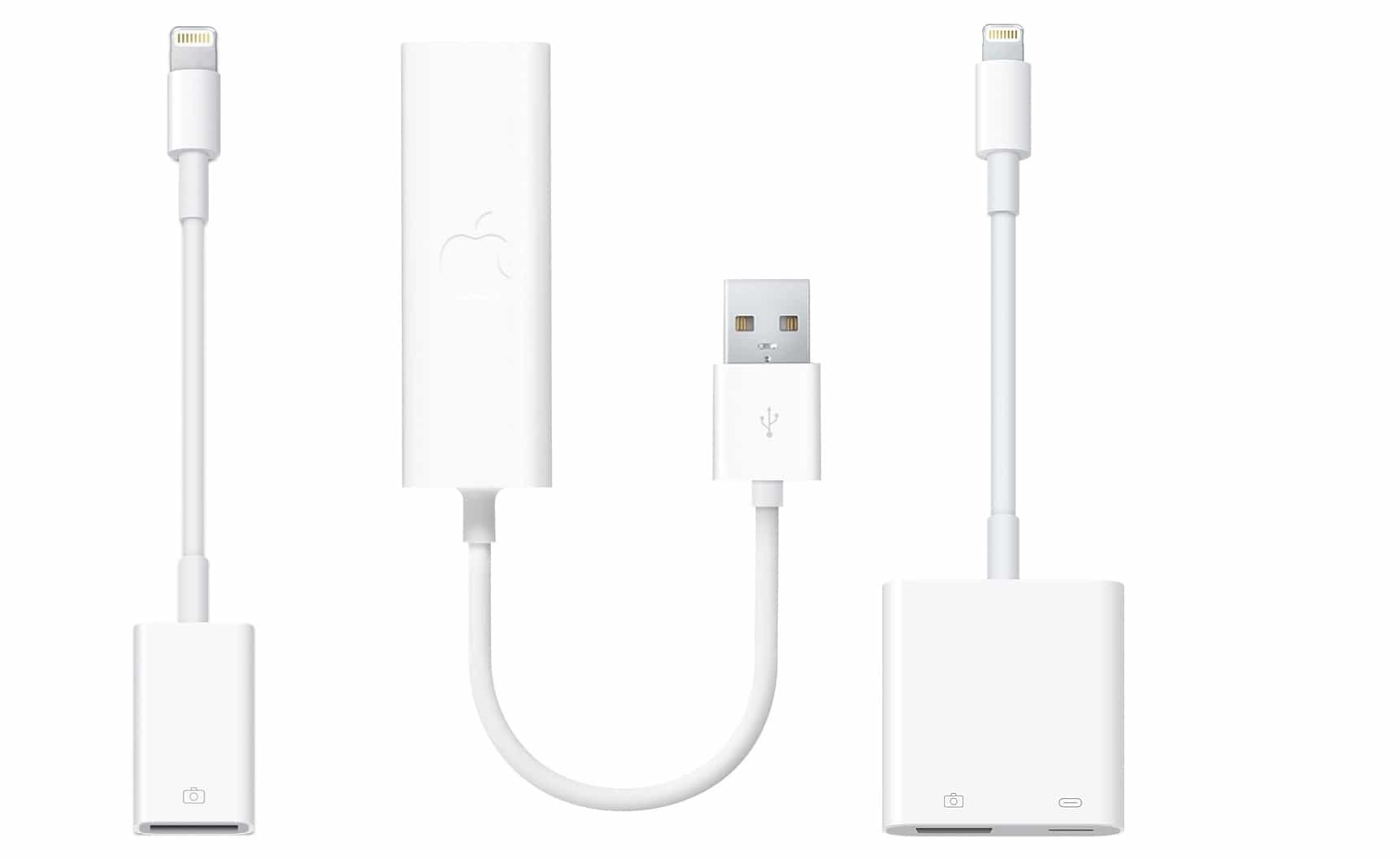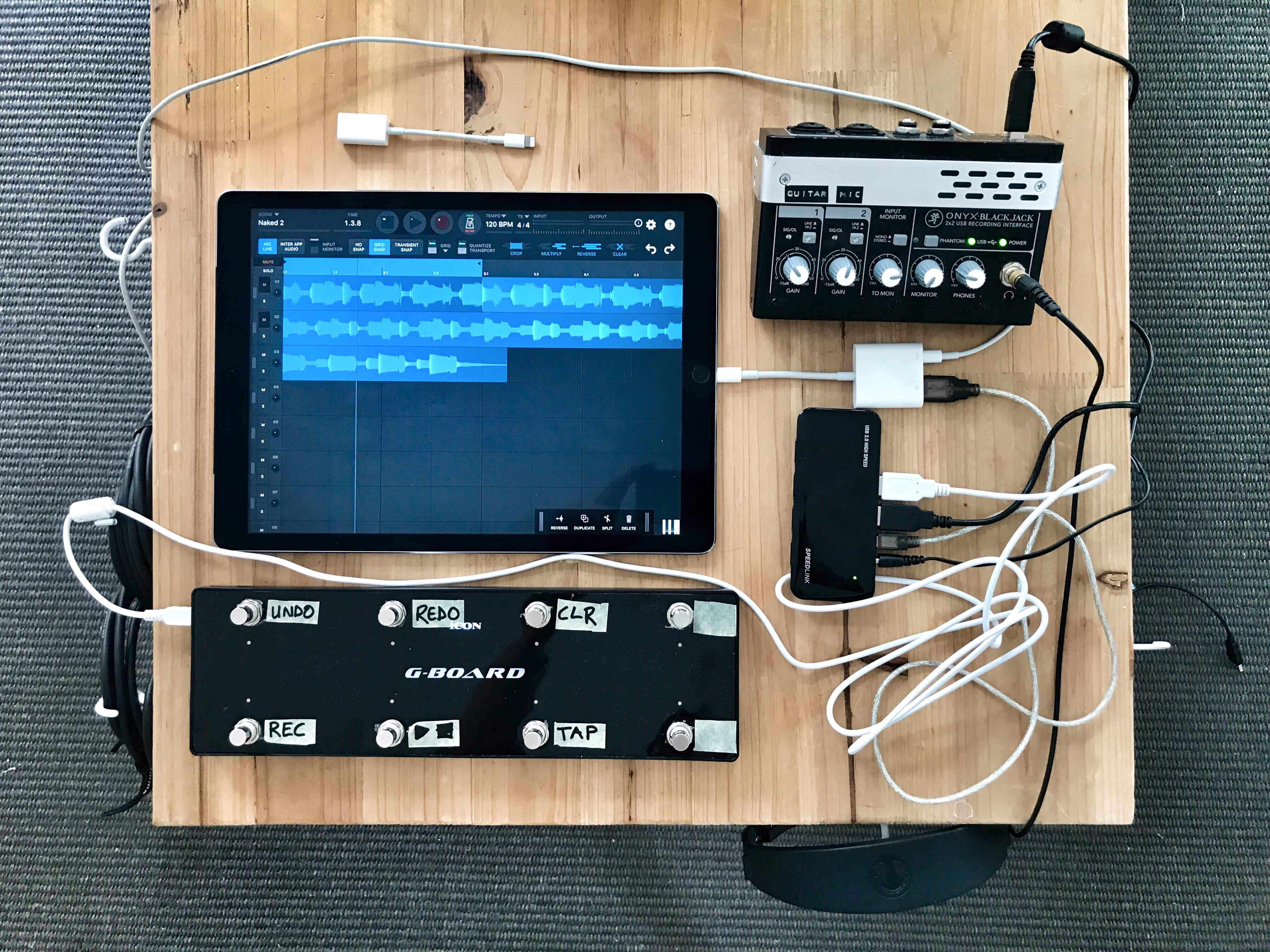You know how the Lightning cable that plugs into your iDevice has a USB plug on the other end? That’s because the Lightning port is a kind of fancy USB port itself. You already know that you can in plug a keyboard, or an audio interface, or a camera, using Apple’s Lightning to USB Camera Adapter. But did you know that you can plug in all of those at once? That’s right — by using a powered USB hub, you can hook up as many accessories as you like to your iPad at once. If you ever use your iPad to work at your desk, with a keyboard, then you can use this tip to build your own iPad docking station.
How to connect a powered USB hub to your iPad
This tip works because the Lightning connector is a USB connector. It won’t let you hook up a printer, or browse a hard drive or USB stick, but it will let you connect all kinds of other accessories. For example, you can hook up:
- Camera
- Keyboard
- Audio interface
- MIDI gear
- Ethernet adapter
- Projector
- Memory card reader
Some of these, like the Ethernet adapter, are surprising. Others are obvious — the name of the Lightning to USB Camera Adapter kind of gives things away.
Like any USB port, the Lightning port can be multiplied with a standard USB hub. You can sometimes get away with using a non-powered hub, but only if the combined power requirements of the connected peripherals are extremely modest. In almost all cases, you’ll see an error on the iPad (or iPhone) screen telling you that the device draws too much power. To avoid this, and keep everything working, you should use a powered hub.
Dongles required to dangle

Photo: Apple
You can’t just plug a USB hub straight into your iPad. To do it, you need a dongle. You should buy either the simple Lightning to USB Camera Adapter ($29), or the fancier Lightning to USB 3 Camera Adapter ($39). If you don’t have an adapter already, get the second one, for reasons that will become clear in a moment.
Once you have your USB hub, plug in all your devices, and plug the hub into the power. Then plug the hub’s output into the USB-Lightning adapter, and plug that into your iPad. Just like hooking up multiple USB peripherals to a Mac, the iPad sees them all separately. So, you could have a QWERTY keyboard to type and control the iPad, a MIDI piano keyboard to play music in GarageBand, an SD card reader for you photos, and a high-quality audio interface hooked up to speakers, or to get input from, say, a guitar. And all of those will work at once.
Limitations of USB hubs on iOS
There are some things you can’t do with a USB hub. For one, you can’t use anything that requires a driver, like a printer, and some audio devices. And you can’t use more than one audio interface at once, either. iOS only “sees” one audio device at a time, so you can hook up several of them for more inputs, or two add multiple speaker outputs.
The other big limit is power. While the powered USB hub takes care of powering the accessories, it won’t charge your iPad. If you’re involved in a long session, with the screen on the whole time, then you might want to plug the iPad in while you do it. But how? You’ve already used up its sole Lightning port.
Charging the iPad
The answer is the Lightning to USB 3 Camera Adapter, mentioned above. This sports not just a USB hole, but a Lightning hole, too. The idea is that you plug your Lighting charger into the adapter, and it passes the power on to the iPad. Thus, your iPad gets juice while you use it.
To recap, then, you will need two power sources for this setup: a powered USB hub for your accessories, and a powered adapter for the iPad. Once you have it all hooked together, though, you can connect your iPad to everything at once just by plugging in a single connector to its Lightning port. Musicians are probably the folks most likely to find this useful, but the trick has a lot to offer everyone. Keyboard, audio, and Ethernet in the office. Power, projector, and keyboard in the boardroom. Keyboard and SD card reader in the studio. You get the idea.
So, next time somebody tells you that the iPad doesn’t have USB, send that dumbo a link to this page. I’ll show ’em.


